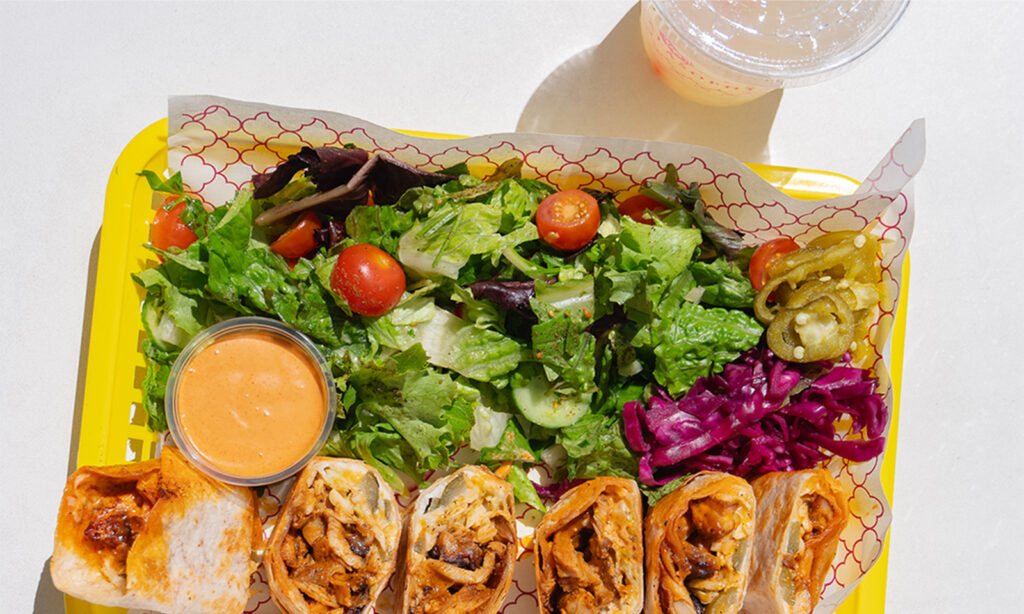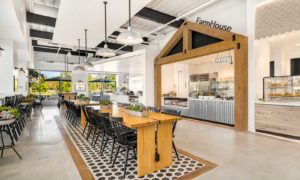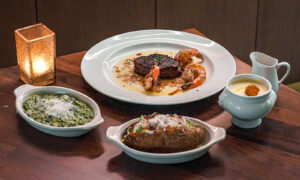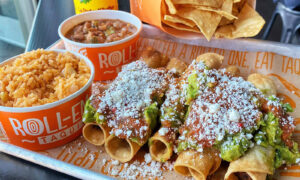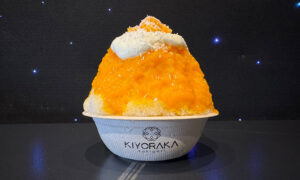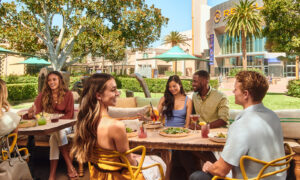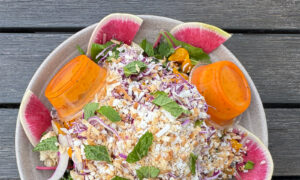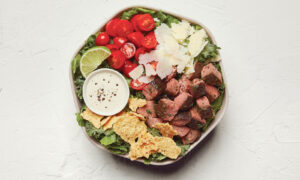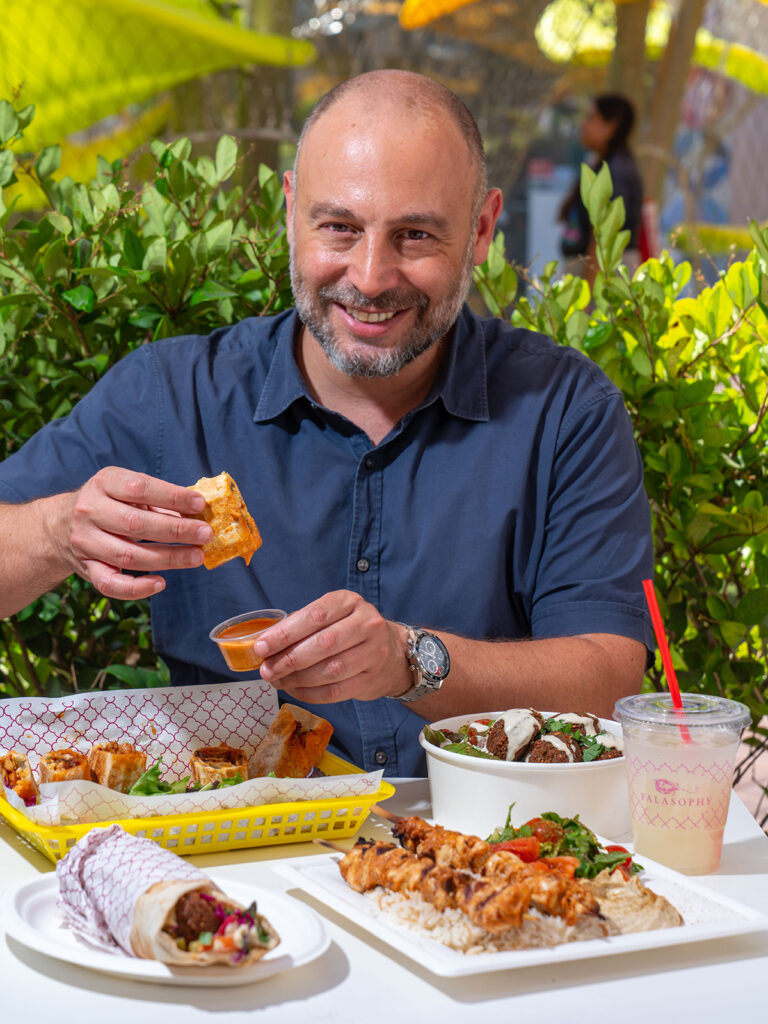
Although Falasophy now serves other Mediterranean foods, its motto remains “all roads lead to falafel.” That’s fitting, since owner Rashad Moumneh launched his Lebanese street-food kitchen nearly a decade ago with a food truck, the Falafel Chariot, that served only falafel.
Did you research other falafel spots before launching yours?
I’d been to a lot in Lebanon and in New York. I knew lots of places in Lebanon because I grew up there. In New York, I would just walk and eat in different falafel shops.
Does your falafel represent a particular style or region?
Ours is a mix – the best kind of mix! I took different things that I like from different cultures. Ours is not like Lebanese falafel – ours is green on the inside. It’s not completely like Israeli or Palestinian falafel, just parsley – ours also has cilantro and dill. We use a bit of the leeks that Egyptians use. That’s why I say ours is a mix.
Why do you think each style is so different?
The Egyptians used fava beans. Lebanese used garbanzo beans, because that’s what was available – a region uses the available ingredient, sticks with it, and fast forward 100 years, we call it their style. There’s no reason why the falafel at Falasophy needs to be reflective of a single region – everything’s available here. We use garbanzo, leeks, onions, garlic, dill, coriander and a lot of cumin. There is lots of flavor!
What else sets your falafel apart?
We grind our falafel on the premises. A lot of places don’t – you’d be surprised. A lot of falafel places use a mix, a dry chickpea powder. We do ours from scratch.

